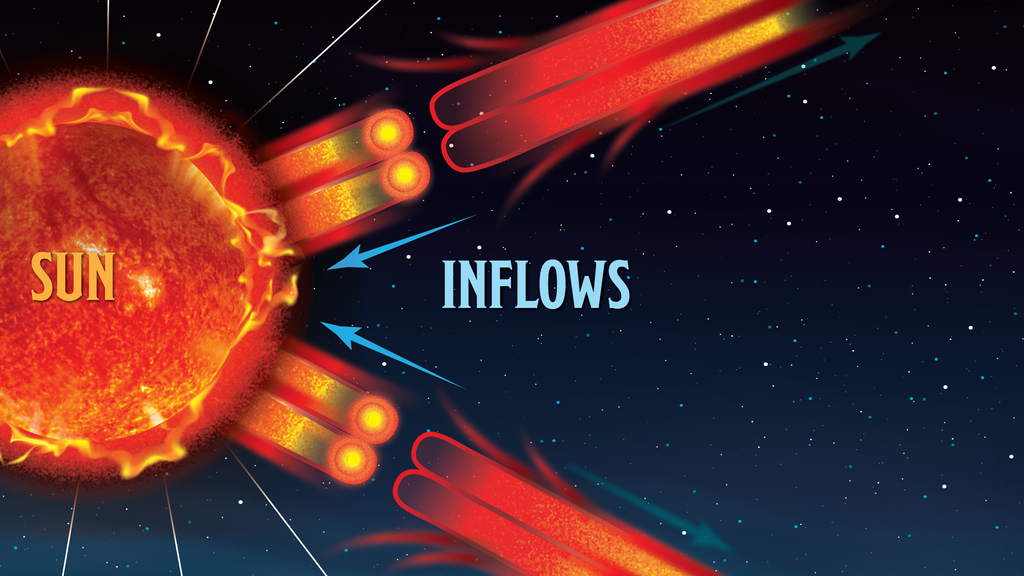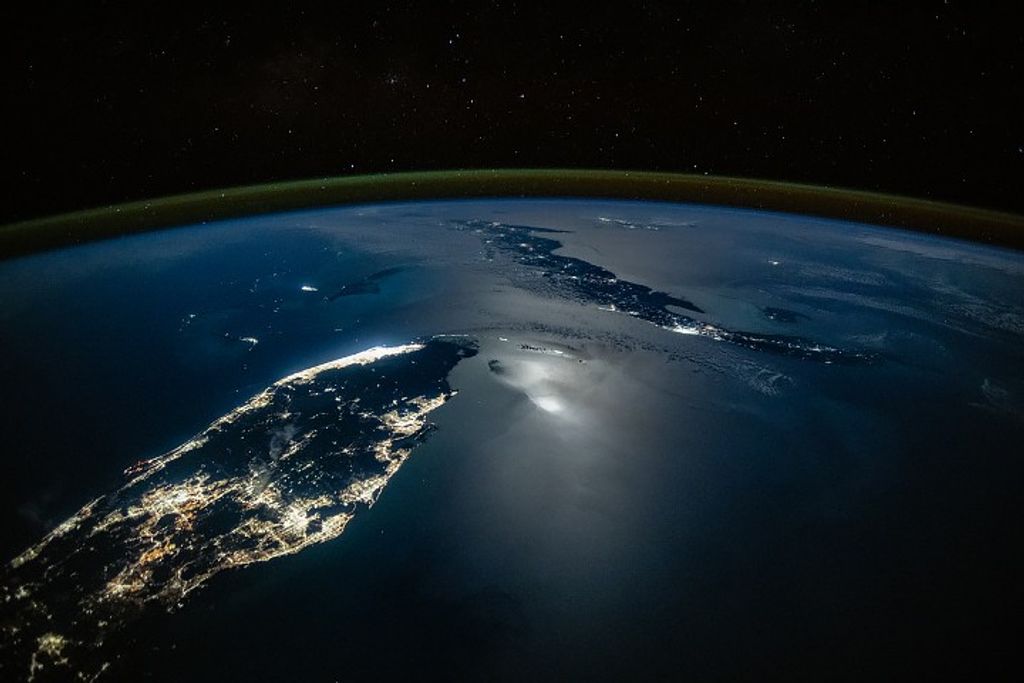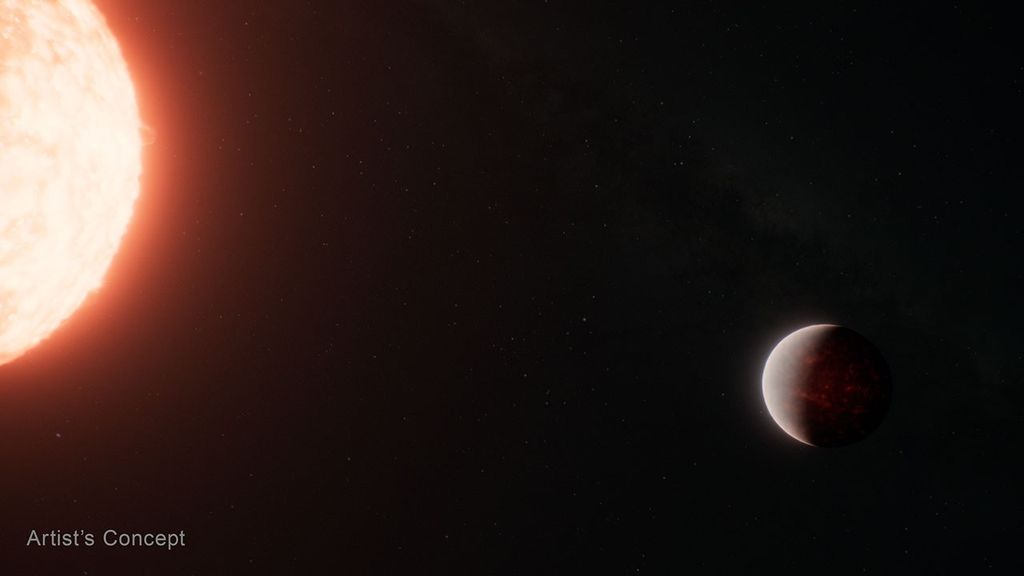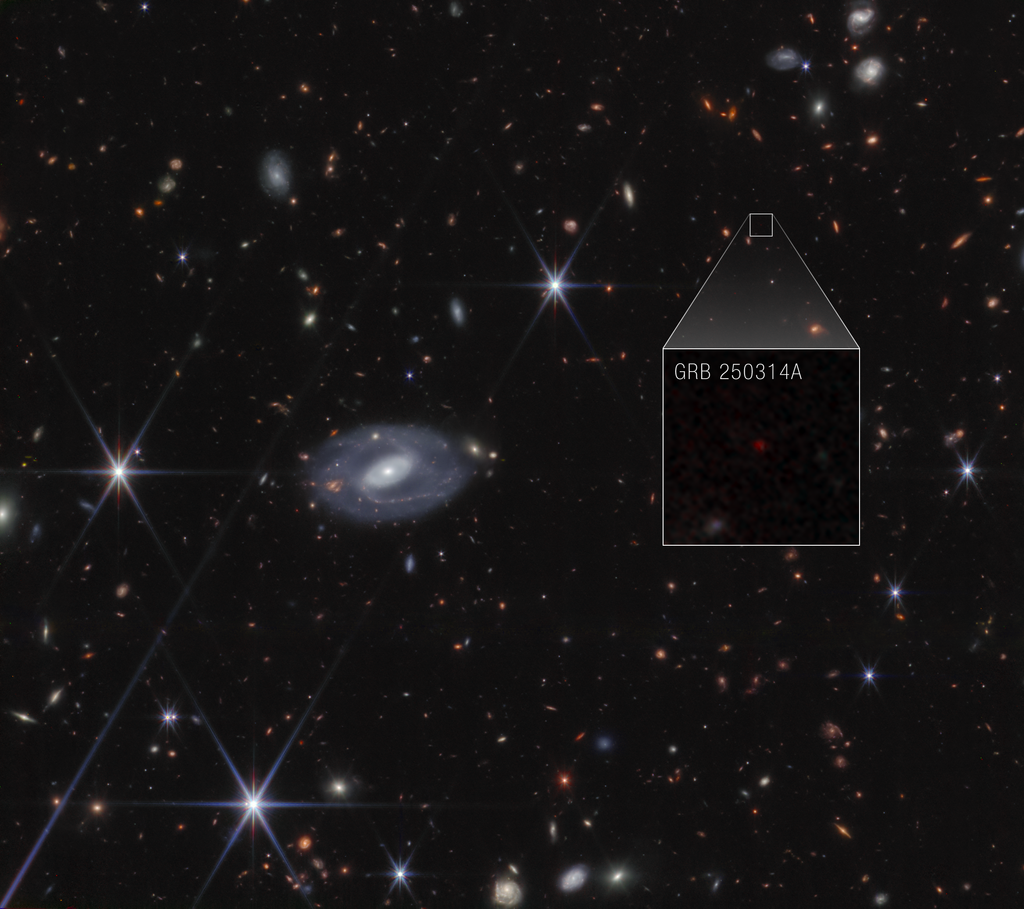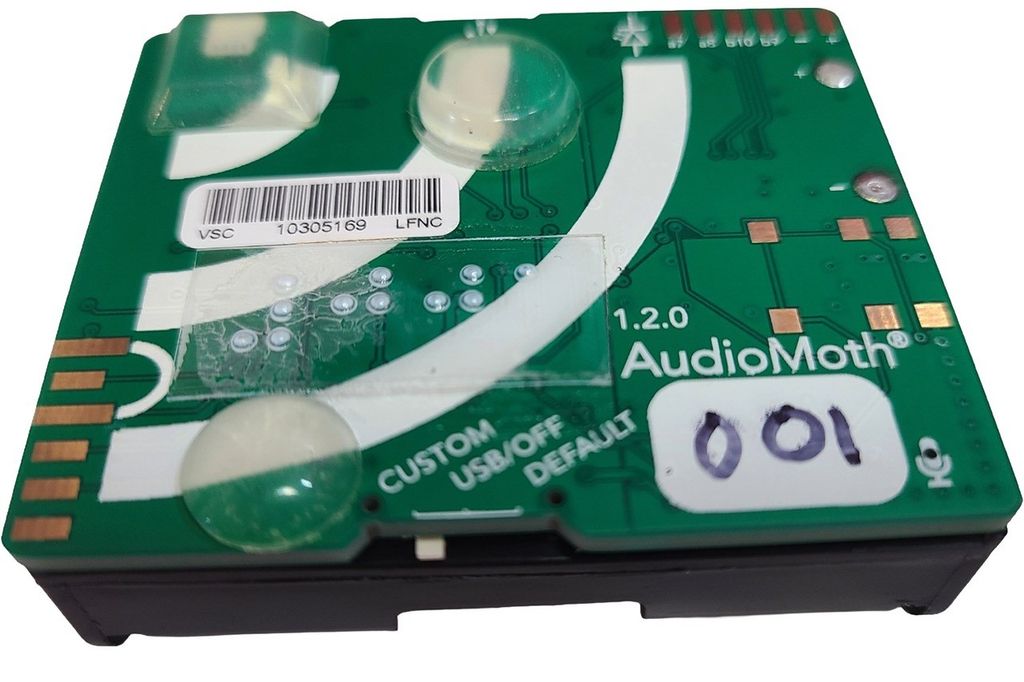1 min read
Hubble Probes the Heart of a Nearby Quasar
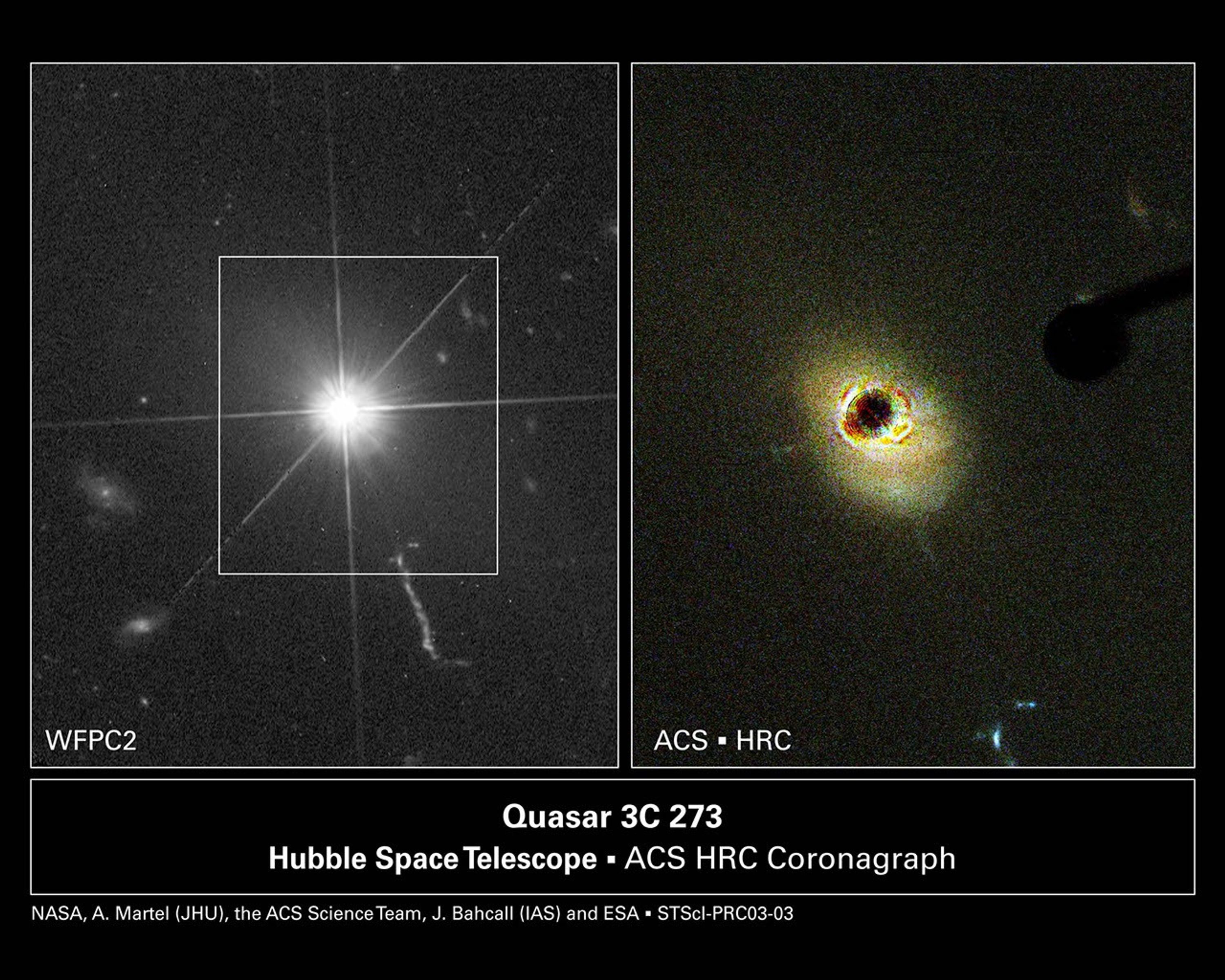
NASA Hubble Space Telescope's new Advanced Camera for Surveys (ACS) has provided the clearest visible-light view yet of the nearby quasar 3C 273. The ACS' coronagraph was used to block the light from the brilliant central quasar, revealing that the quasar's host galaxy is significantly more complex than had been suggested in previous observations. Features in the surrounding galaxy normally drowned out by the quasar's glow now show up clearly. The ACS reveals a spiral plume wound around the quasar, a red dust lane, and a blue arc and clump in the path of the jet blasted from the quasar. These details had never been seen before. Previously known clumps of hot gas and the inner blue optical jet are now resolved more clearly.
The power of the ACS coronagraph is demonstrated in this picture. The Hubble image on the left, taken with the Wide Field Planetary Camera 2, shows the brilliant quasar but little else. The diffraction spikes demonstrate the quasar is truly a point-source of light (like a star) because the black hole's "central engine" is so compact. Once the blinding "headlight beam" of the quasar is blocked by the ACS (right), the host galaxy pops into view. Note that the ACS' occulting "finger" and other coronagraphic spot are seen in black near the top of the ACS High Resolution Channel image.
Quasars (also known as QSOs - short for quasi-stellar objects) were discovered in the early 1960s, but at least two decades passed before astronomers had observational evidence that they reside in galaxies. They now are commonly accepted to be supermassive black holes accreting infalling gas and dust. Using the ACS, astronomers want to learn what activities in a quasar's host galaxy feed the black hole, allowing it to "turn on" as a quasar.
About the Object
- R.A. PositionR.A. PositionRight ascension – analogous to longitude – is one component of an object's position.12h 29m 6.7s
- Dec. PositionDec. PositionDeclination – analogous to latitude – is one component of an object's position.02° 3' 9.0"
- ConstellationConstellationOne of 88 recognized regions of the celestial sphere in which the object appears.Virgo
- DistanceDistanceThe physical distance from Earth to the astronomical object. Distances within our solar system are usually measured in Astronomical Units (AU). Distances between stars are usually measured in light-years. Interstellar distances can also be measured in parsecs.1.9 billion light-years (580 megaparsecs)
- DimensionsDimensionsThe physical size of the object or the apparent angle it subtends on the sky.The ACS image is roughly 30 arcseconds (275 kly or 85 kiloparsecs) in width.
About the Data
- Data DescriptionData DescriptionProposal: A description of the observations, their scientific justification, and the links to the data available in the science archive.
Science Team: The astronomers who planned the observations and analyzed the data. "PI" refers to the Principal Investigator.Principal Astronomers, WFPC2 data: J. Bahcall (IAS)
ACS science team: H.C. Ford (JHU), G.D. Illingworth (UCO/Lick Observatory), N. Benitez (JHU), M. Clampin (STScI), G.F. Hartig (STScI), D.R. Ardila (JHU), F. Bartko (Bartko Science & Technology), J.P. Blakeslee (JHU), R.J. Bouwens (UCO/Lick Obs.), T.J. Broadhurst (Racah Institute of Physics, The Hebrew University), R.A. Brown (STScI), C.J. Burrows (STScI), E.S. Cheng (NASA-GSFC), N.J.G. Cross (JHU), P.D. Feldman (JHU), M. Franx (Leiden Observatory), D.A.Golimowski (JHU), C. Gronwall (PSU), L. Infante (Pontificia Universidad Catolica de Chile), R.A. Kimble (NASA GSFC), J.E. Krist (STScI), M.P. Lesser (Steward Obs.), A.R. Martel (JHU), F. Menanteau (JHU), G.R. Meurer (JHU), G.K. Miley (Leiden Obs.), M. Postman (STScI), P. Rosati (ESO), M. Sirianni (JHU), W.B. Sparks (STScI), H.D. Tran (JHU), Z.I. Tsvetanov (JHU), R.L. White (STScI/JHU), and W. Zheng (JHU)
- InstrumentInstrumentThe science instrument used to produce the data.HST>WFPC2 (left), HST>ACS/HRC (right)
- Exposure DatesExposure DatesThe date(s) that the telescope made its observations and the total exposure time.June 4, 1994 (left), and July 19-20, 2002 (right)
- FiltersFiltersThe camera filters that were used in the science observations.WFPC2: F606W (V)ACS/HRC: F475W (g), F502N ([O III]), F606W (V), F814W (I)
- Object NameObject NameA name or catalog number that astronomers use to identify an astronomical object.3C 273
- Object DescriptionObject DescriptionThe type of astronomical object.Quasar
- Release DateJanuary 9, 2003
- Science ReleaseHubble Probes the Heart of a Nearby Quasar
- Credit

Share
Details
Claire Andreoli
NASA’s Goddard Space Flight Center
Greenbelt, Maryland
claire.andreoli@nasa.gov









